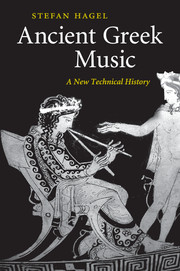Book contents
- Frontmatter
- Contents
- List of diagrams
- List of tables
- List of figures
- List of abbreviations
- Preface
- 1 The evolution of ancient Greek musical notation
- 2 Notation, instruments and the voice
- 3 Notation in the handbooks
- 4 Strings and notes
- 5 Fine tuning
- 6 Going beyond Ptolemy?
- 7 Assisted resonance
- 8 The extant musical documents
- 9 Aulos types and pitches
- 10 Before Aristoxenus
- 11 Synthesis
- Bibliography
- Indices
11 - Synthesis
Published online by Cambridge University Press: 03 May 2010
- Frontmatter
- Contents
- List of diagrams
- List of tables
- List of figures
- List of abbreviations
- Preface
- 1 The evolution of ancient Greek musical notation
- 2 Notation, instruments and the voice
- 3 Notation in the handbooks
- 4 Strings and notes
- 5 Fine tuning
- 6 Going beyond Ptolemy?
- 7 Assisted resonance
- 8 The extant musical documents
- 9 Aulos types and pitches
- 10 Before Aristoxenus
- 11 Synthesis
- Bibliography
- Indices
Summary
HISTORICAL OVERVIEW
Finally, it may be useful to combine the bits and pieces on which the foregoing chapters have hopefully thrown some light within a short historical overview, at some points developed into a model of the large strands along which ancient Greek music seems to have evolved. We start somewhere towards the end of the sixth century BC, the time from which the first dim reflexes reach us of musicians deliberating the nature of pitch structures. Of the various classes of instruments that were in use, the lyre and the aulos already dominated the musical culture, being the prime instruments of public performance in cultic and civic ritual as well as in professional competition. Later memory attributed the archaic lyre culture, commonly associated with seven–stringed tunings, to Terpander of Lesbos. The testimonies draw the picture of a variety of tunings within the range of an octave or perhaps also a seventh. Quite probably, these (or most of these) already included the basic division of the octave by fifths and fourths from its extremes, which remained unchanged until at least the second century AD. In accordance with the typical tuning procedure in fifths and fourth, there is little doubt that the diatonic division of the tonal space, similar to the scales known from the ancient Near East, was in some respect the basis of lyre music, although we must leave room for variation.
- Type
- Chapter
- Information
- Ancient Greek MusicA New Technical History, pp. 442 - 453Publisher: Cambridge University PressPrint publication year: 2009



